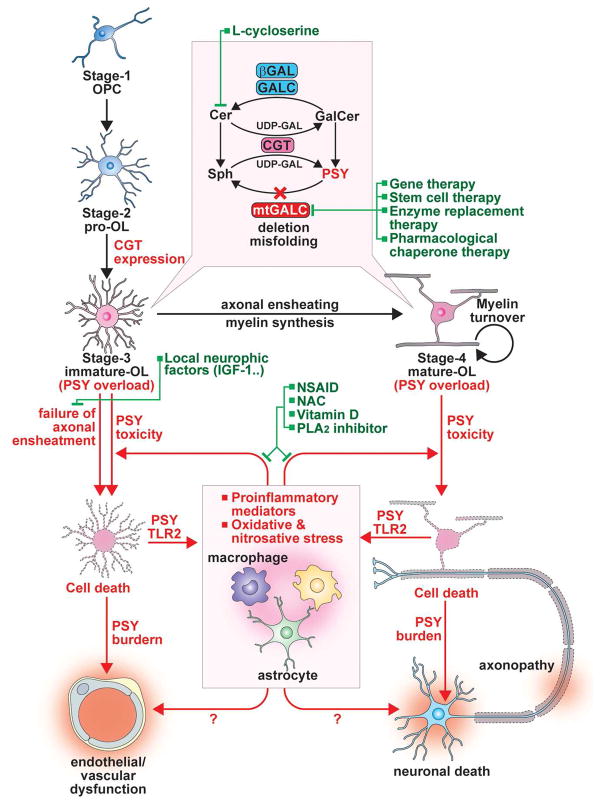Figure 2. Mechanisms underlying demyelination and dysmyelination and mechanism-based therapeutic targets for Krabbe disease.
PSY is a byproduct of metabolism of galactosylceramide (GalCer), one of major glycosphingolipids of myelin. Therefore, expression of GalCer synthesizing enzyme UDP-galactose ceramide galactosyl transferase (CGT) leading to production of GalCer is tightly linked to PSY synthesis and thus PSY-induced OL toxicity under GALC deficient conditions. In OL progenitor cells (OPCs) the expression level of CGT is low but its expression is upregulated during the differentiation into immature and mature OLs. Therefore, psychosine may accumulate in OLs during the late stages of differentiation and resulting in failure of myelin formation. In addition, myelin turnover process may result in further accumulation of PSY in survived mature OLs and thus ultimately lead to loss of OLs and demyelination. Based on the critical role of PSY accumulation in the disease processes, numerous therapeutic approaches have been proposed and tested to reduce the PSY load. These includes pharmacological inhibition of PSY synthesis (L-cycloserine), enzyme replacement therapy, gene and stem cell therapies. Recent studies also described the idea of stabilizing the misfolded GALC enzyme in KD by pharmacological chaperone and tested in cell culture studies. The loss of OLs may induce neuroinflammation via activation of innate immune responses mediated by TLR2 and at the same time, the induced neuroinflammation may be amplified by PSY released from degenerated OLs. In addition to brain resident cells, such as astrocytes and microglia, the infiltrating peripheral immune cells, such as macrophages and lymphocytes, are also involved in PSY-induced mechanisms of neuroinflammatory, oxidative, and nitrosative stress pathway. In addition, these secondary disease processes may involve other disease processes, such as endothelial vascular complications and neuronal/axonal loss and thus neuro-muscular dysfunction. Therefore, drugs targeting to decrease the PSY load and neuroinflammation (e.g. NSAID, sPLA2 inhibitors) and antioxidants (NAC and vitamin D) could be potential alternative therapy or combination therapy with other approaches, such as enzyme replacement therapy, gene therapy, and stem cell therapy.

